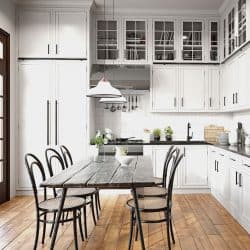Cabinets are one of the most important parts of a kitchen. They provide decoration and storage space for food and cooking supplies. If you're thinking of installing new cabinets, you may be wondering if kitchen cabinets should reach the ceiling. We've researched the relationship between kitchen cabinets and the ceiling for you.
Typically, kitchen cabinets reach the ceiling. But it's ultimately up to you to decide what you want your kitchen cabinets to look like. There are many pros to kitchen cabinets that reach the ceiling, such as:
- extra storage space
- low maintenance
- pleasing aesthetic
Despite these advantages of kitchen cabinets reaching the ceiling, there can be some downsides, such as:
- higher cost
- difficulty to access top shelves
- no space for decorations
How do you fill the gap between the kitchen cabinets and the ceiling? Do upper and lower cabinets need to line up? Where should a backsplash be when the countertop is longer than the cabinets? Keep reading to learn the answers to these questions and more!
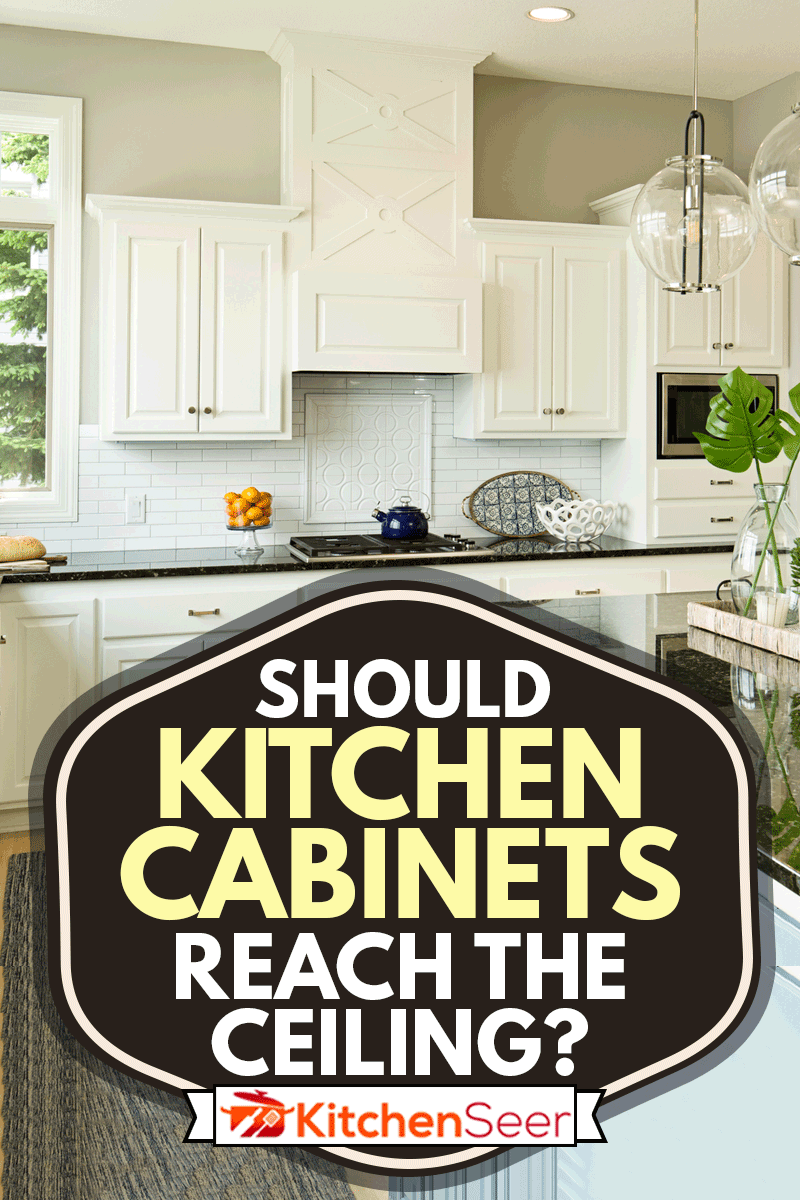
Pros of Kitchen Cabinets that Reach the Ceiling
Kitchen cabinets that reach the ceiling are becoming more and more popular. This is because they provide a great aesthetic and are lower maintenance than cabinets with a gap between the ceiling. Here are some of the benefits of your cabinets reaching the ceiling:
Extra Storage Space
Generally, cabinets that reach the ceiling are up to 42" in height. This provides plenty of shelf space to store food and/or kitchen supplies, which is important in making the most of the limited space in your kitchen.
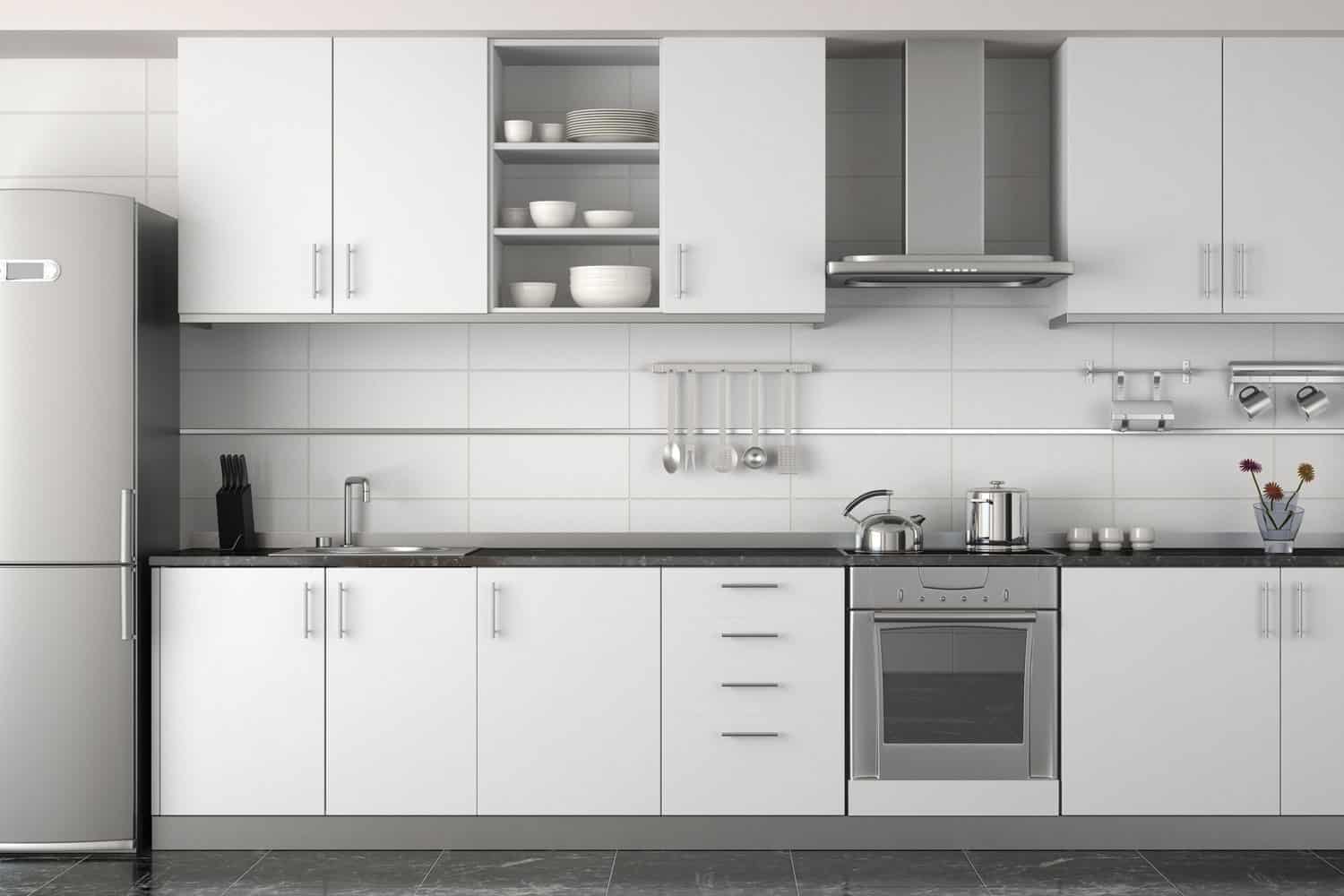
Low Maintenance
Without a gap between the top of the cabinets and the ceiling, there is no room to collect dust. This is especially important because it's difficult to reach the top of the cabinets and keep them regularly dust-free. Dust-free cabinet tops keep your kitchen looking clean and sleek.
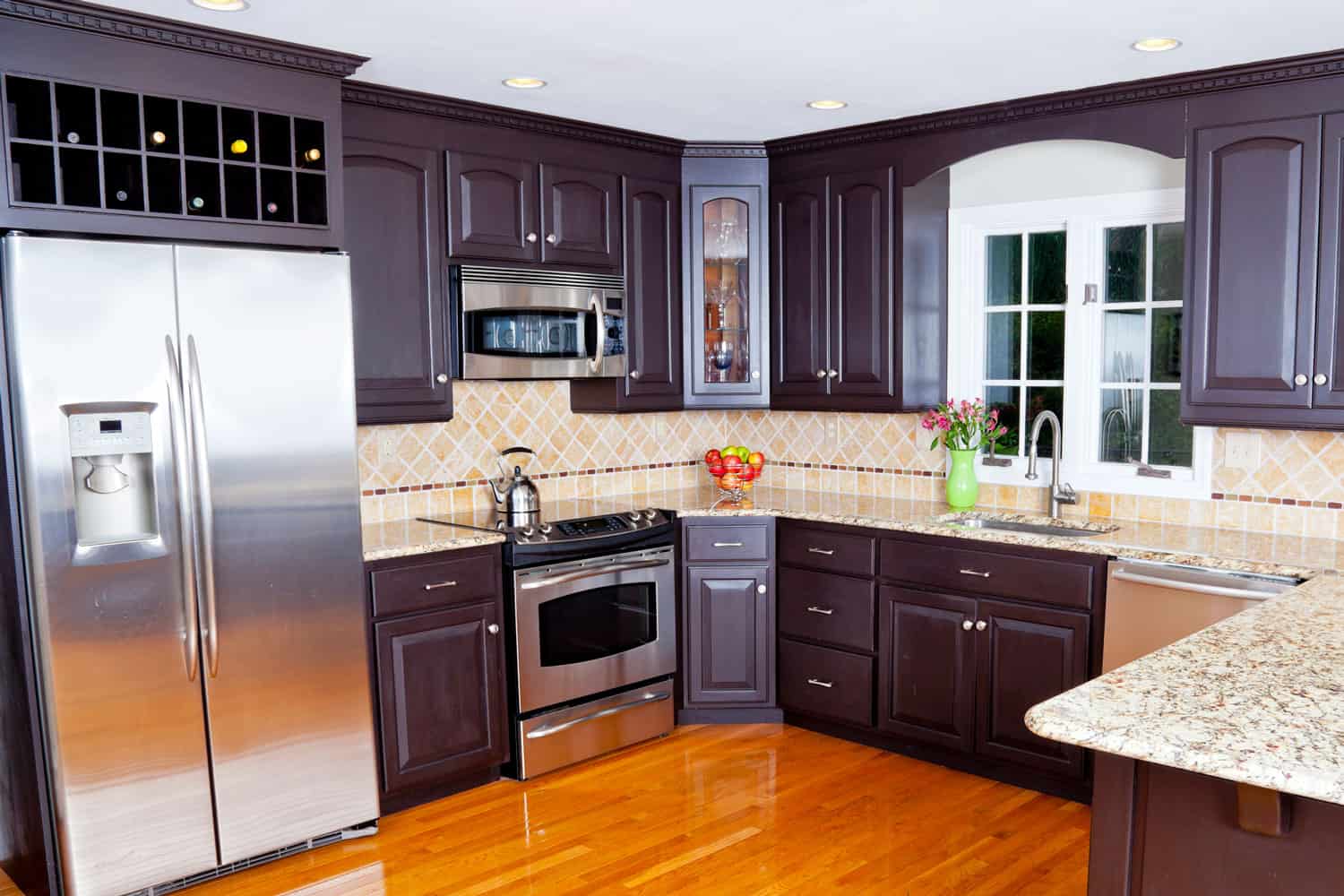
Pleasing Aesthetic
Cabinets that go to the ceiling leave a kitchen looking sleek and modern. There is no need to fill the space between the cabinets and the ceiling with decorations that could clutter up the kitchen. If you are going for a minimalistic design, you might want to consider extending your cabinets all the way to the ceiling.
Cons of Kitchen Cabinets that Reach the Ceiling
Despite the advantages of having cabinets that reach the ceiling, there are some disadvantages, such as increased cost and difficulty accessing the top shelves. Here are some of the downsides of having cabinets that reach the ceiling:
Higher Cost
Because cabinets that go to the ceiling are taller than cabinets that don't reach the ceiling, they require more materials. These extra materials will cost more and increase your expenses in materials and installation labor.
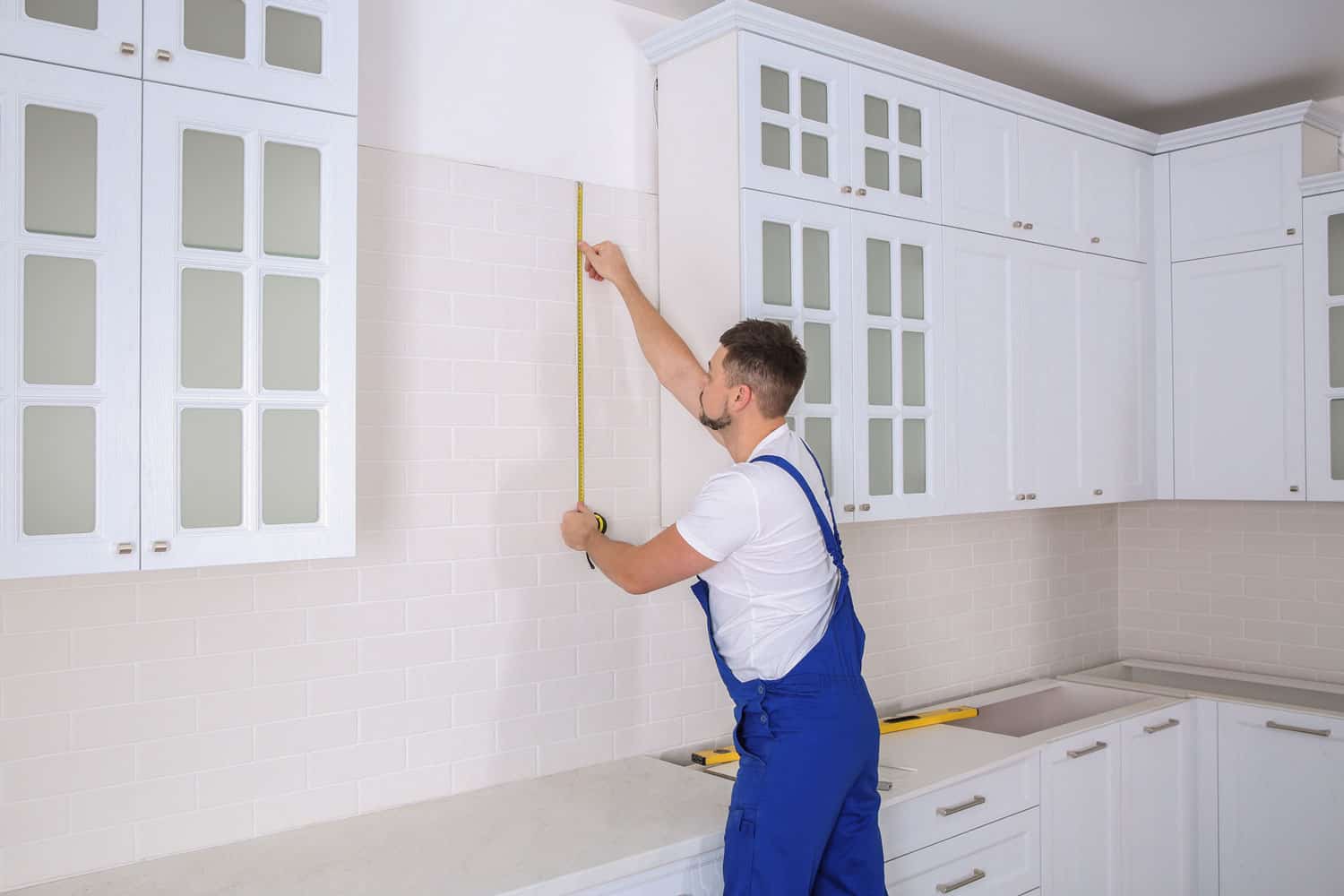
Difficulty To Access Top Shelves
The standard height for kitchen ceilings is 8 feet. Cabinets that reach the ceiling can be hard to access. You might even need a step stool or a small ladder in your kitchen to help you reach the top shelves, which can be inconvenient and time-consuming. You might decide it's not worth using the top shelves for storage, and they'll just become wasted space.
Purchase a step stool from Amazon, here.
No Space for Decorations
If there's a gap between the top of the cabinets and the ceiling, you can decorate your kitchen in the style of your choosing. Without this gap, you can't add decorations to personalize your kitchen to your liking.
How High Should Kitchen Cabinets Be For A 8-Foot Ceiling?
Kitchen cabinets are mounted at a standard height of 54" above the floor. This means for an 8-foot ceiling, there is a standard of 42" of available cabinet space.
How high Should Kitchen Cabinets be for a 9-10 Foot Ceiling?
For a 9-foot ceiling, there would be 54" of cabinet space, and a 10-foot ceiling would have 66" of cabinet space.
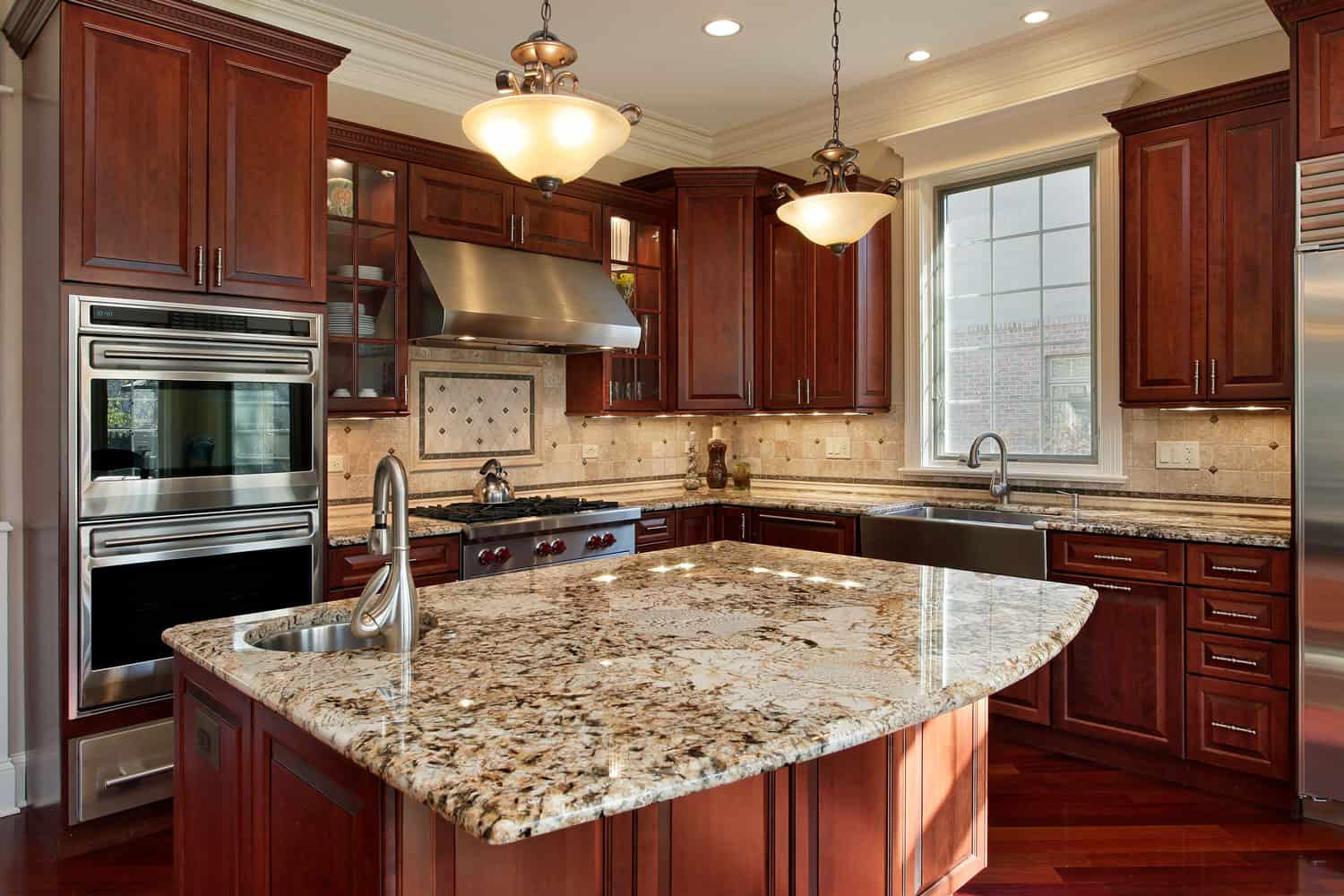
How Do You Fill The Gap Between Kitchen Cabinets And The Ceiling?
If you don't like the space between your cabinets and your ceiling, there are many ways you can cover it up. Here are four options we recommend:
1. Trim
If the space between your cabinets and your ceiling isn't very large, you can cover it up with some trim. It will run on the top of your cabinets and make them look more cohesive with the rest of your kitchen. They will also prevent dust from collecting on top of your cabinets.
2. Additional Cabinets
If you have enough space between your cabinets and your ceiling, you can add a second row of cabinets. This will give you more storage space and make your kitchen look sleek and clean.
3. Window
If your kitchen is connected to an outside wall, you can cut a window above your kitchen cabinets to fill the gap between your cabinets and your ceiling. The additional light will brighten up your kitchen and make it feel more open. Of course, you should always consult a professional before cutting into your walls.
4. Decorations
One of the easiest ways to fill the space between your cabinets and ceiling is to find decorations that match your style. Decorations can make a kitchen feel homey and welcoming and can really add warmth to the space.
Do Upper And Lower Cabinets Need To Line Up?
Cabinets are one of the most important parts of a kitchen, and it's important they are installed correctly. Both the top and the bottom cabinets should align with the edge of the countertop. However, the bottom and the top cabinets don't have to line up perfectly. Because they are different sizes and have different uses, the top and bottom cabinets will likely have different widths. This means it's very unlikely the top and bottom cabinets will line up, and that's perfectly alright.
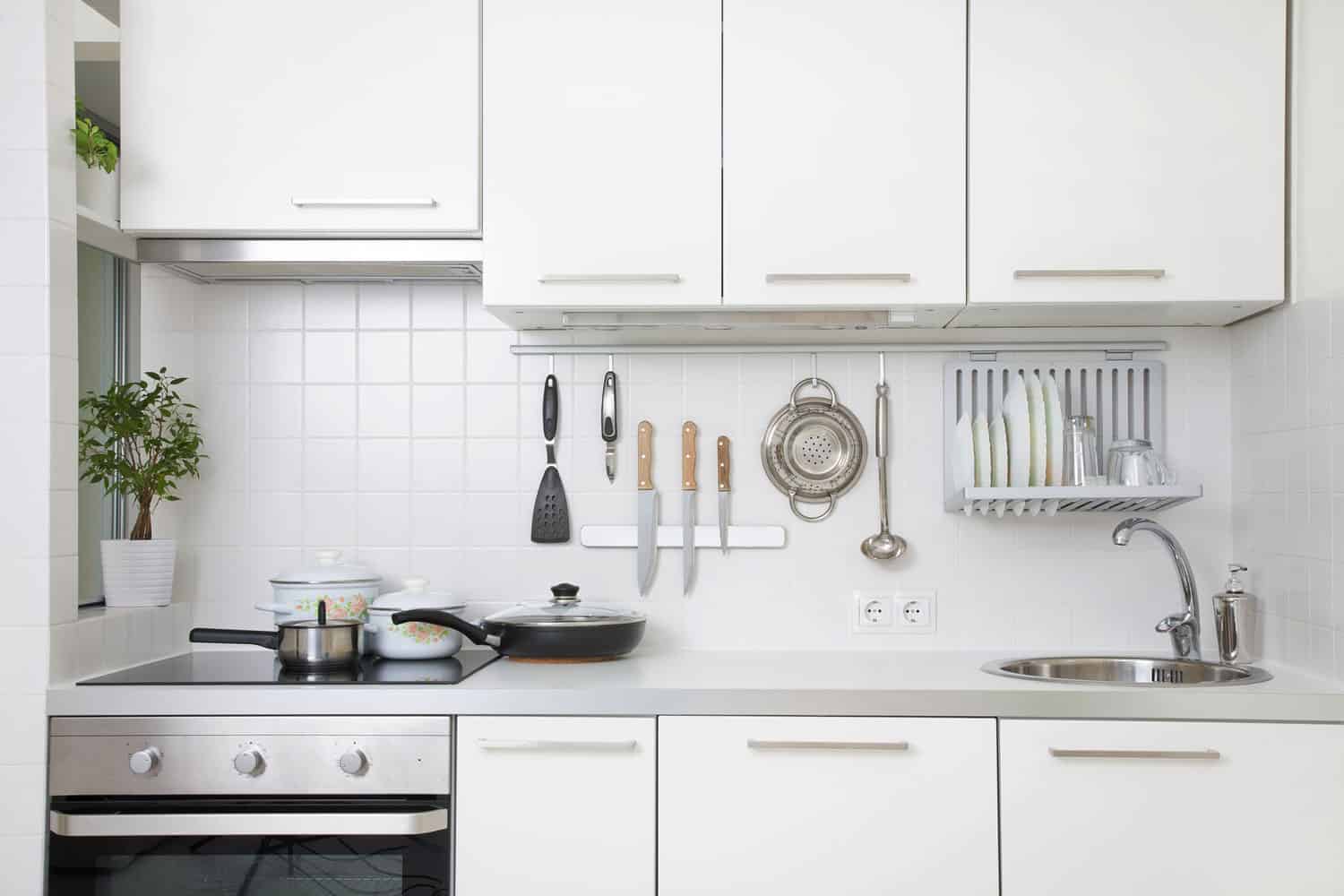
Where Should A Backsplash Be When The Countertop Is Longer Than The Cabinets?
It's industry standard that any backsplash you install should end in line with your kitchen cabinets. Even professionals often install backsplashes to end in line with the countertop, but this creates an odd and abrupt ending. If you want the best for your kitchen, make sure your backsplash aligns with your cabinets' edge and not your countertop.
In Conclusion
Kitchen cabinets are important to bring a kitchen together and provide plenty of storage space for all your cooking supplies. While it's ultimately up to you whether you want your cabinets to extend to the ceiling, it is becoming more and more popular and makes a kitchen feel modern. If you have existing cabinets that don't reach the ceiling, you can fill the space with decorations, additional cabinets, trim, or even windows. The design and layout of your kitchen is ultimately up to you, and there are many options for you to choose from.
Before you go, check out some of our other posts we think you might like:
How Tall Are Kitchen Cabinets?
Are Kitchen Cabinets Considered Furniture or Fixtures


![This modern kitchen gives a wide view showing the wood floor and cabinets, How Tall Are Kitchen Cabinets? [3 Types Examined]](https://kitchenseer.com/wp-content/uploads/2020/07/This-modern-kitchen-gives-a-wide-view-showing-the-wood-floor-and-cabinets-250x250.jpg)
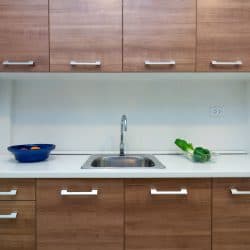
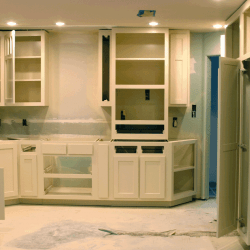
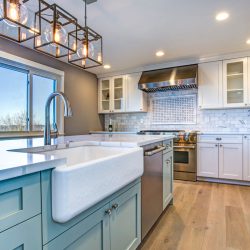
![Stretch ceiling in the kitchen with installed and included spotlights. What Paint Finish Is Best For Kitchen Ceiling [3 Suggestions]](https://kitchenseer.com/wp-content/uploads/2021/09/Stretch-ceiling-in-the-kitchen-with-installed-and-included-spotlights.-What-Paint-Finish-Is-Best-For-Kitchen-Ceiling-3-Suggestions-250x250.png)
